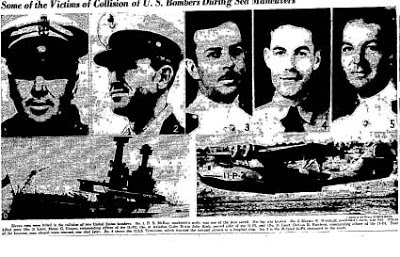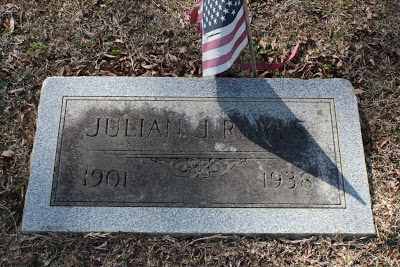In their early days, PBYs, or patrol bombers, were the fastest thing in the sky. Designed to float on the seas and fly in the skies, the floating bombers were used for a variety of missions from bombing to patrolling to search and rescue missions.
PBYs were not designed to fly in close formation. That was the case seventy five years ago off the coast of San Diego, California. Two ocean skimming planes collided in mid air. Ten naval airmen were killed. One of them, Julian Rawls, was a Dublin man. At the time, it was the worst air disaster in the history of the United States Navy.
The Navy brass in Washington were planning for a possible invasion along the western coast of the United States in the latter years of the 1930s. Although the true amphibious attack never materialized, the Navy kept preparing for the worst case scenario.
Rain was forecasted on a cool, cloudy Ground Hog Day evening on February 2, 1938. With a moderate northwesterly wind was blowing in to the shoreline, it was not going to be a good day for flying. Flying at night would be worse, much worse.
More than 100 sea going vessels, 250 planes and 40,000 men were engaged in war maneuvers some 70 miles southwest of Point Loma, California. The San Diego Union reported that nearly all of the personnel in San Diego were out at sea participating in the war games.
The time was 20:37 hours. Pitch black, moonless skies, permeated with low lying, rainy, rapidly moving clouds and augmented by heavy squall winds, obscured the visions of the flying boat pilots. Lt. Elmer Cooper, (LEFT) flying 11-P-3 and Lt. Carlton Hutchins flying 11-P-4 began to drift dangerously close to each other. Then in a deadly instant, the two flying boats became entangled.
Sailors as far away as San Clemente Island saw the brilliant flames illuminating the dreary night sky. Crash boats of the U.S.S. Pennsylvania picked up the four survivors; D.B. McKay, V.O. Hatfield and L.S. Carpenter, all from the crew of 11-P-4. J.H. Hester, Rawls’ counterpart aboard the other doomed plane, survived the initial collision but later died aboard a hospital ship.
Chief Machinist’s Mate, V.B. McKay, one of the three survivors, told friends, “We were flying through a rain squall with no visibility. We were flying in close formation between 3000 and 4000 feet above the ocean.”
“The plane 11-P-3 nosed into our tail. The other ship caught fire. Ours went into a spin and fell toward the ocean,” said McKay, who suffered a broken leg.
“Lt. Carleton Hutchins (the commander of 11-P-4) ordered all of the crew to abandon ship. All of them got free either by using parachutes or in some other fashion. Two or three of us tried to hold Lt. Hutchins above water. He was unconscious. We managed to keep him up for about half an hour and then we finally had to let go,” McKay recalled.
Lt. Hutchins, (LEFT) who remained at the controls until his men bailed out of the crippled plane, was awarded the Congressional Medal of Honor for his heroism. The ultimately noble citation read, “Although his plane was badly damaged, Lieutenant Hutchins remained at the controls endeavoring to bring the damaged plane to a safe landing and to afford an opportunity for his crew to escape by parachutes. His cool, calculated conduct contributed principally to the saving of the lives of all who survived. His conduct on this occasion was above and beyond the call of duty.”
Lt. Hutchins was further honored in 1942 when the destroyer, the U.S.S. Hutchins was named in his honor. Lt. Cooper was also honored with a destroyer, the U.S.S. Cooper named in his honor.
The seven-man crew of 11-P-3 never had a chance. Radio man Rawls barely had time to send out a Mayday message. P-3 Pilot Cooper did all that he could, never having the time to think about his beloved wife Frances and son Petie back at home. The 105-foot wide plane burned and exploded into unrecognizable pieces.
Four fortunate survivors of 11-P-4 had enough time to don their parachutes and jump to safety. There were no survivors aboard 11-P-3. The bodies of the ill-fated crewmen of 11-P-3 were found except for Julian Rawls, John Neidsweicki and Martin Woodruff.
Julian Rawls, (LEFT) a native of Dublin and then a resident of Chula Vista, California, had been in the service for seventeen years, two years in the Army and fifteen years in the Navy. Rawls, a radio operator, was eligible for retirement in 1940.
Rawls, the husband of Evelyn Prince Watson, was born in Dublin in 1901 . A son of O.H.D. Rawls and Julia Rawls, Julian grew up in a couple of homes on North Jefferson Street.
All movements of the fleet ceased. Radio silence was lifted to initiate a search for survivors. The search lights of 98 ships illuminated the crash zone in hopes of spotting survivors, any survivors. At dawn, every ship, boat and plane were pressed into search and rescue operations. No signs of survivors, victors, or Rawls’ PBY were ever found. The search was called off the following evening.
The war games resumed.
Admiral Charles Blakey instituted an investigation of the cause of the collision and promised that the regrettable and costly accident would help the navy to prevent future accidents like this one.
The collision and resulting crashes of two PBYs were reported to be the greatest loss of a heavier than air aircraft disaster in the history of the United States Navy. Eleven men died that fateful night.
Training accidents, a fact of life in the service, were common in World War II. The collision was the third in six months in the area, leaving an even two dozen men dead.
The body of Dublin’s Julian Rawls, was reportedly never found. There is a cenotaph marker in North view Cemetery (Sect. D, Row 3) to mark the life of this man, perhaps our county’s first casualty of World War II.
Yet, his grave marker does not indicate that he was a member of the U.S. Navy - only a worn tattered flag indicates that he was a patriot. And, Rawls’ name is not inscribed on the World War II monument on the courthouse lawn. Now and forever, let us remember Julian Rawls and his fellow men who gave their lives to protect our country, seventy five years ago this week.
Internet gems
- Casinos Not On Gamstop
- Non Aams Casino
- Casinos Not On Gamstop
- Non Gamstop Casinos
- Casinos Not On Gamstop
- UK Betting Sites
- Non Gamstop Casinos
- Casinos Not On Gamstop
- UK Online Casinos Not On Gamstop
- UK Casino Not On Gamstop
- Non Gamstop Casinos UK
- Casino En Ligne France
- Non Gamstop Casinos
- Sites Not On Gamstop
- I Migliori Casino Non Aams
- Casino Sites UK
- Casino Not On Gamstop






